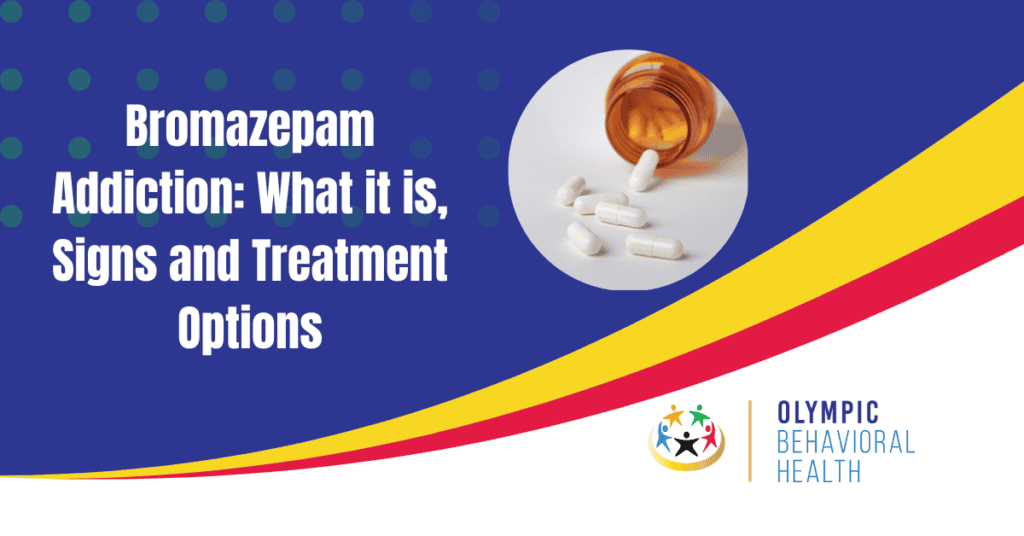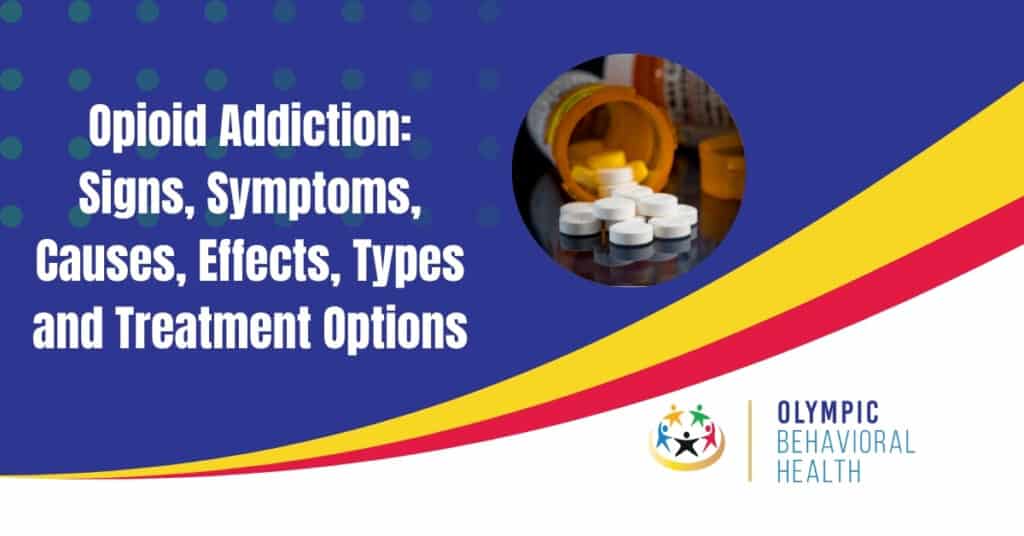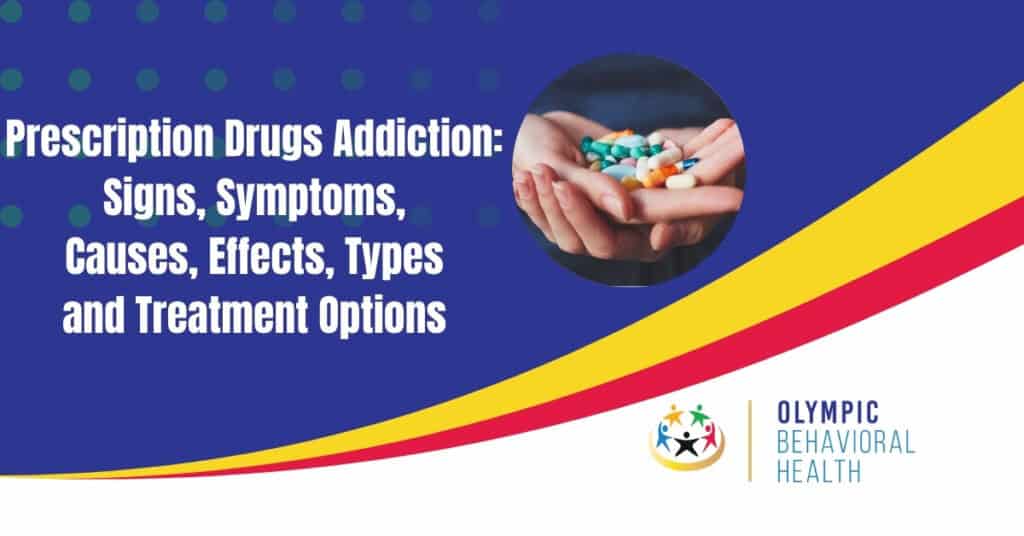Bromazepam addiction, also known as dependency or substance abuse, refers to the compulsive and dangerous misuse of the prescription drug bromazepam. Common synonyms for this topic include bromazepam misuse, dependency on bromazepam, and bromazepam substance abuse. Recognizing the signs of bromazepam addiction is crucial in order to seek appropriate treatment options and regain control of one’s life.
What is Bromazepam?
Bromazepam is a benzodiazepine medication used to treat panic and anxiety disorders. It enhances the effects of a neurotransmitter called GABA in the brain, which reduces excessive brain activity and promotes relaxation.
Bromazepam, also known as Lexotan or Lexotanil, comes in tablet form and is taken orally. It has a rapid onset of action and is metabolized by the liver, with a shorter duration of effect compared to other benzodiazepines.
When using bromazepam, it is important to follow the prescribed dosage and treatment duration as directed by a healthcare professional. Abruptly stopping the medication can lead to withdrawal symptoms and potential harm. Gradually reducing the dosage under medical supervision helps minimize withdrawal effects.
Bromazepam may cause side effects such as drowsiness, poor coordination, and decreased interest in activities. Seeking medical attention is necessary if severe allergic reactions or depressive effects occur. Paradoxical reactions like increased anxiety or aural hallucinations are possible.
Caution should be used when prescribing bromazepam to pregnant women, nursing women, and elderly patients due to potential adverse effects. It is important to consult with a healthcare professional before taking bromazepam if there are underlying medical conditions or if other medications are being taken to prevent drug interactions.
Bromazepam has the potential for physical and substance dependence if used repeatedly or for a long time. Following the prescribed dosage and avoiding recreational use is critical. Treatment options are available for bromazepam addiction, including medical detoxification, therapy, counseling, and support groups. State-funded treatment programs, online treatment locators, and SAMHSA’s national helpline can provide assistance.
So, in summary, bromazepam is a benzodiazepine medication used to treat panic and anxiety disorders. It works by enhancing the effects of the neurotransmitter GABA in the brain, promoting relaxation. It is important to follow the prescribed dosage and treatment duration, as abrupt discontinuation can lead to withdrawal symptoms. Side effects may occur, and caution should be exercised when prescribing bromazepam to certain populations. There is also the potential for dependence, so using it as directed and seeking treatment if addiction occurs is crucial.
Pop a pill, chase your worries away – that’s the magical world of Bromazepam.
How is Bromazepam used?
Bromazepam, a benzodiazepine medication, is used to treat anxiety disorders and short-term insomnia. Here’s how it is used:
1. Dosage: To determine the appropriate dosage of Bromazepam, it is important to consider the individual’s condition, age, and response. Generally, the daily dosage ranges from 3 to 12 milligrams, which should be divided into two or three smaller doses.
2. Administration: Bromazepam is taken orally, usually in the form of a tablet, with or without food. It is crucial to carefully follow the provided instructions.
3. Effectiveness: Bromazepam is swiftly absorbed by the body and typically starts working within an hour. It works by enhancing the activity of gamma-aminobutyric acid (GABA), which is a neurotransmitter responsible for calming the central nervous system and reducing anxiety.
4. Duration of use: Bromazepam is typically prescribed for short-term use, usually lasting a few days to a few weeks. It is important to note that prolonged or excessive usage can result in dependence, addiction, and various side effects.
5. Withdrawal: Abruptly stopping the use of Bromazepam can lead to withdrawal symptoms such as increased anxiety, restlessness, irritability, insomnia, and even seizures. It is advised to gradually reduce the dosage under medical supervision when discontinuing the medication.
While Bromazepam can be effective, it is crucial to use it as directed and under the guidance of a healthcare professional. Misusing or using it for an extended period can lead to dependence and adverse effects. For personalized advice, it is advisable to consult with your healthcare provider.
Fun Fact: In the United States, benzodiazepines, including Bromazepam, are commonly prescribed, resulting in millions of filled prescriptions each year.
Bromazepam Addiction
Bromazepam Addiction is a benzodiazepine medication used to treat anxiety and insomnia. However, it’s important to be aware of the potential for bromazepam addiction.
Bromazepam addiction occurs when a person becomes dependent on the drug and experiences withdrawal symptoms if they stop suddenly. Approximately 20-30% of benzodiazepine users may develop bromazepam addiction or dependence.
Signs of bromazepam addiction include increasing dosage without medical guidance, using the drug for non-medical purposes, intense cravings, and withdrawal symptoms such as anxiety, restlessness, and insomnia.
Untreated bromazepam addiction can have severe consequences on physical and mental health, including cognitive impairment, memory problems, and increased risk of accidents and falls. In severe cases, bromazepam addiction can lead to overdose and death.
To address bromazepam addiction, seeking professional help is crucial. Treatment options for bromazepam addiction include detoxification, therapy, and medication-assisted treatment. Detoxification helps manage withdrawal symptoms, while therapy addresses underlying causes. Medication-assisted treatment supports recovery and reduces cravings.
Preventing bromazepam addiction is important. Use bromazepam as prescribed and follow recommended dosage instructions. Communicate openly with healthcare providers about any concerns or side effects.
What is Bromazepam Addiction?
What is Bromazepam Addiction?
Bromazepam addiction refers to the physical and psychological dependence on the drug bromazepam. Bromazepam is a benzodiazepine commonly used for the treatment of anxiety disorders, panic disorders, and short-term insomnia. This drug enhances the effects of gamma-aminobutyric acid (GABA), which is a neurotransmitter in the brain known for its calming effect on the central nervous system.
The repeated and prolonged use of bromazepam can lead to addiction, as the brain’s reward system becomes accustomed to the drug. Additionally, higher doses of bromazepam can result in physical dependence, where the body relies on the drug to function normally.
Signs and symptoms of bromazepam addiction may include increased anxiety, poor coordination, decreased interest in activities, aural hallucinations, and thoughts of suicide. Abrupt withdrawal from bromazepam can cause various symptoms such as abdominal cramps, difficulty breathing, and seizures. It is essential to note that using bromazepam during pregnancy can be harmful to the baby, leading to withdrawal symptoms and developmental issues.
If someone is struggling with bromazepam addiction, it is crucial to seek medical attention and access appropriate treatment. Various options are available, including medical detoxification, therapy and counseling, and support groups. State-funded treatment programs and local treatment facilities can provide the necessary assistance.
Addicted to Bromazepam? Here’s a Rx for recognizing the signs and symptoms.
What are the Signs and Symptoms of Bromazepam Addiction?
Bromazepam addiction can have detrimental effects on both physical and mental health. It is essential to be able to identify the signs and symptoms of bromazepam addiction in order to seek timely assistance. Here is a comprehensive list of the signs and symptoms to be mindful of:
1. Increased tolerance: A clear indication of bromazepam addiction is when individuals require higher doses of the drug to achieve the desired effects.
2. Withdrawal symptoms: When individuals who are addicted to bromazepam attempt to either stop or reduce their usage, they may experience a range of withdrawal symptoms such as anxiety, irritability, insomnia, tremors, and even seizures.
3. Cravings: Those who are grappling with bromazepam addiction often experience intense cravings for the drug, making it difficult to resist using it.
4. Loss of control: One characteristic of addiction is the struggle to control usage. Individuals may find themselves taking bromazepam more frequently or in higher doses than they originally intended.
5. Neglecting responsibilities: Addiction can lead to a decline in performance at work or school as individuals prioritize their drug use over other important obligations and responsibilities.
6. Social isolation: People who are addicted to bromazepam may distance themselves from their friends and family, often isolating themselves as a result of their addictive behavior.
7. Mood changes: Bromazepam addiction can bring about mood swings, such as increased irritability, agitation, and even depression.
8. Physical signs: Prolonged use of bromazepam can result in physical indicators such as poor coordination, slurred speech, and persistent drowsiness.
If you notice any of these signs and symptoms of bromazepam addiction, it is crucial to seek professional assistance. Treatment options may include medical detoxification, therapy and counseling, and participation in support groups.
Remember, addiction is a medical condition that requires support and treatment. Do not hesitate to reach out to healthcare professionals or organizations that specialize in substance abuse disorders for guidance. Resources like SAMHSA’s national helpline and online treatment locators can be extremely helpful in finding suitable care.
Prioritize your health and seek help whenever you need it.
What are the Risk Factors for Bromazepam Addiction?
Risk Factors for Bromazepam Addiction:
Bromazepam, a benzodiazepine medication, is often prescribed for anxiety disorders and short-term insomnia. However, it carries a risk of addiction. To understand bromazepam addiction, it is important to be aware of the following risk factors:
1. Prolonged and repeated consumption: The longer and more frequently a person takes bromazepam, the higher their risk of addiction. Using it only as prescribed and for the shortest necessary duration is crucial.
2. Personal or family history of substance dependence: Individuals with a history of substance abuse or addiction, either personally or in their family, have a higher risk of developing bromazepam addiction. Genetic and environmental factors contribute to this vulnerability.
3. Presence of co-occurring mental disorders: People with underlying mental health conditions, such as panic and anxiety disorders, may be more susceptible to bromazepam addiction. Its calming effects can reinforce the association between symptom relief and drug use.
4. Recreational consumption: Using bromazepam for non-medical purposes significantly increases the risk of addiction. Taking higher doses or using it in ways other than prescribed can lead to a dangerous cycle of dependence.
5. Elderly patients: Older adults are more susceptible to the addictive effects of bromazepam due to changes in metabolism and increased sensitivity to its sedative properties. Prescribing this medication to older individuals must be done with caution to minimize addiction risk.
6. Concurrent use of other substances: Combining bromazepam with alcohol or illicit drugs can have severe and even deadly interactions. The combination’s depressant effects on the central nervous system can lead to respiratory depression, loss of consciousness, and other harmful outcomes.
Recognizing these risk factors is crucial, and precautionary measures should be taken when using bromazepam. If you or someone you know is struggling with bromazepam addiction, seeking help from state-funded treatment programs, support groups, or medical professionals is essential. SAMHSA’s national helpline and treatment referral routing service can provide information and assistance in finding local treatment facilities. Remember, addiction is a treatable condition, and help is available.
Side Effects of Bromazepam
When it comes to bromazepam, understanding its side effects is crucial. In this section, we’ll uncover the potential impact of bromazepam on your well-being. From the commonly experienced side effects to the more serious ones, we’ll explore the spectrum of effects this medication may have. So buckle up and let’s dive into the world of bromazepam’s impact on our bodies.
Common Side Effects of Bromazepam
Common Side Effects of Bromazepam
- Drowsiness: Bromazepam can cause drowsiness, making you feel tired and less alert during the day.
- Confusion: Bromazepam can cause confusion and difficulty concentrating, affecting your ability to focus.
- Impaired coordination: Some individuals may experience poor coordination and unsteady movements while taking bromazepam, increasing the risk of accidents.
- Slurred speech: Bromazepam can affect speech, leading to slurred or slow speech, making communication difficult.
- Memory problems: People taking bromazepam may experience difficulty remembering new information or events.
- Dizziness: Bromazepam can cause dizziness, making you feel lightheaded or unstable.
- Headache: Some individuals may experience headaches while taking bromazepam, ranging from mild to severe.
- Dry mouth: Bromazepam can decrease saliva production, causing a dry or sticky sensation in the mouth.
- Upset stomach: It is common to experience gastrointestinal side effects such as nausea, vomiting, or upset stomach when taking bromazepam.
- Changes in appetite: Some individuals may experience changes in appetite while taking bromazepam, including increased or decreased appetite.
If you experience any of these side effects while taking bromazepam, consult your healthcare provider. They can provide guidance on managing these side effects and determine if adjustments to your medication are necessary.
Note: This information is specific to the sub-topic “Common Side Effects of Bromazepam” and not the entire article about bromazepam addiction and side effects. For a comprehensive understanding of bromazepam and its effects, we recommend reading the full article.
Serious Side Effects of Bromazepam: When taking this medication, be prepared for side effects that make you question whether it’s worth it to be calm.
Serious Side Effects of Bromazepam
Serious Side Effects of Bromazepam
Bromazepam, a benzodiazepine derivative, is an intermediate-acting tranquilizer prescribed to manage anxiety and short-term insomnia. However, it is important to be aware of its serious side effects.
1. Depressive effects: Bromazepam can cause a decrease in interest or pleasure in activities, as well as feelings of sadness or hopelessness. Seek medical attention if you experience these symptoms.
2. Withdrawal symptoms: Prolonged or high-dose use of bromazepam can lead to physical dependence. Abrupt withdrawal can result in increased anxiety, irritability, insomnia, and even seizures. Gradually taper off under medical supervision to avoid these symptoms.
3. Loss of consciousness: In rare cases, bromazepam can cause loss of consciousness. Be cautious when engaging in activities that require alertness, such as driving or operating heavy machinery.
4. Harm to baby: Pregnant and nursing women should avoid bromazepam due to the potential harm it can cause to the developing baby. It increases the risk of birth defects and other complications.
5. Serious allergic reactions: Some individuals may experience severe allergic reactions to bromazepam, including difficulty breathing, rash, itching, and swelling of the face, lips, or tongue. Seek immediate medical attention if you experience these symptoms.
Bromazepam carries potential risks and serious side effects. Use it as prescribed by a healthcare professional and monitor for any adverse reactions. If you have concerns, seek medical advice.
Fact: Benzodiazepine medications like bromazepam can be addictive and are classified as schedule IV drugs by SAMHSA. Use them under medical guidance and never share them with others.
Treatment for Bromazepam Addiction
Are you or someone you know struggling with bromazepam addiction? In this section, we’ll explore the various treatment options available to help overcome this dependency. From medical detoxification to therapy and counseling, as well as support groups, we’ll uncover the key approaches that can guide individuals towards recovery. So, let’s dive in and discover the pathways to freedom from bromazepam addiction.
Medical Detoxification
When it comes to treating bromazepam addiction, one effective method is medical detoxification. Medical detoxification involves supervised withdrawal from bromazepam under the care of healthcare professionals. Here are important aspects of medical detoxification:
1. Safe and monitored environment: Medical detoxification is conducted in a specialized detoxification center or hospital. This ensures that patients receive necessary medical attention and monitoring throughout the withdrawal process.
2. Tapering off the medication: The dosage of bromazepam is gradually reduced over time to minimize withdrawal symptoms and prevent complications. Healthcare professionals adjust the tapering schedule based on individual needs.
3. Management of withdrawal symptoms: During detoxification, individuals may experience symptoms such as anxiety, insomnia, muscle cramps, and mood swings. Medical professionals provide medications and therapies to alleviate these symptoms and keep patients comfortable.
4. Support and encouragement: Medical detoxification is not only a physical process but also an emotional one. It is essential to provide psychological support and encouragement through counseling, therapy, and support groups.
5. Aftercare planning: Medical detoxification is the first step in the recovery process. Developing an aftercare plan is crucial to support long-term sobriety. This may involve further therapy, counseling, and participation in support groups. The aftercare plan is individualized based on the specific needs and goals of the patient.
Medical detoxification plays a vital role in treating bromazepam addiction. It provides a safe and effective way to withdraw from the medication, minimize withdrawal symptoms, and ensure the well-being of the individual. If you or someone you know is struggling with bromazepam addiction, seek help from a medical professional or treatment referral service for guidance and support.
Therapy and counseling: Because sometimes you need more than just a pill to talk you off the ledge.
Therapy and Counseling
Therapy and counseling are vital components in the treatment of bromazepam addiction. It is essential to consider the following key aspects:
– Individual therapy: Engaging in one-on-one sessions with a therapist is crucial for addressing the underlying issues that contribute to addiction. Through therapy, individuals can develop coping mechanisms, learn healthier ways to manage stress and anxiety, and delve into the root causes of their addiction.
– Group therapy: Participating in supportive group settings allows individuals to connect with others who are facing similar struggles, reducing feelings of isolation and fostering empathy. In these groups, participants can share their experiences, gain valuable insights, and receive constructive feedback.
– Cognitive-behavioral therapy (CBT): This widely utilized approach helps individuals identify negative thought patterns and behaviors, and provides them with healthier alternatives. CBT also focuses on managing cravings, preventing relapse, and improving overall well-being.
– Family therapy: Involving loved ones in therapy plays a crucial role in improving communication, rebuilding trust, and providing education and support. Family therapy helps families understand addiction as a disease and equips them with the knowledge and skills needed to best support the recovery process.
– Support groups: Supportive groups such as Narcotics Anonymous or SMART Recovery offer ongoing guidance, encouragement, and support. By sharing experiences and seeking advice from others who have faced similar challenges, participants can find solace and strength in their recovery journey.
It is important to remember that therapy and counseling are essential components of comprehensive treatment for bromazepam addiction. It is recommended to find a qualified therapist or program that specializes in substance use disorders and evidence-based therapies in order to achieve the best outcomes. Each individual’s recovery journey is unique, and therapy provides the necessary tools and support for overcoming addiction and achieving long-term sobriety.
Support groups: Where you can find comfort in knowing you’re not alone in your bromazepam addiction, and where you can finally meet people who understand that a ‘support group’ is just a fancy term for ‘let’s get coffee and complain about our meds’.
Support Groups
Support Groups
When seeking support for Bromazepam addiction, joining a support group is highly beneficial. Support groups provide a safe environment where individuals facing similar challenges can come together to share experiences, offer advice, and provide encouragement. Here are some reasons why support groups are valuable for those struggling with Bromazepam addiction:
1. Empathy and Understanding: Support groups consist of individuals with firsthand experience with Bromazepam addiction. Connecting with others who have gone through similar struggles provides validation and understanding. Through shared experiences, group members can offer empathy and support.
2. Shared Knowledge and Strategies: Support groups offer a platform for sharing knowledge and strategies for coping with Bromazepam addiction. Members can share tips on managing withdrawal symptoms, developing healthy coping mechanisms, and avoiding triggers for substance use.
3. Accountability: Being part of a support group creates a sense of accountability. Members are encouraged to stay committed to their recovery journey, share their progress, and set goals. This accountability enhances motivation and helps individuals stay on track with their recovery goals.
4. Building a Supportive Network: Support groups provide an opportunity to build connections and develop a supportive network. Having a community of individuals who understand and support each other makes the recovery process feel less isolating and helps individuals feel more empowered.
5. Encouragement and Inspiration: Witnessing the successes of others in their recovery journey can be highly motivating and inspiring. Support groups provide a space to celebrate achievements, share success stories, and offer encouragement to one another.
One notable success story of an individual who found support through a Bromazepam addiction support group is Sarah. Sarah had been struggling with Bromazepam addiction for several years, and her life was spiraling out of control. She had experienced severe side effects and had even overdosed on multiple occasions. Feeling hopeless and isolated, Sarah decided to attend a local support group for individuals dealing with substance abuse disorders.
From the moment Sarah stepped into the support group, she was met with warmth and understanding. She connected with fellow members who shared their stories and offered guidance. Through the support group, Sarah gained valuable insights on managing withdrawal symptoms, rebuilding her life, and maintaining sobriety.
The support group became Sarah’s lifeline. She found comfort in knowing that she was not alone in her struggles. The encouragement and inspiration she received from fellow members motivated her to stay committed to her recovery journey. Sarah developed close friendships within the support group, and together, they celebrated milestones, overcame challenges, and provided unwavering support to one another.
Thanks to the support group, Sarah was able to overcome her Bromazepam addiction and regain control of her life. She now serves as a mentor within the group, offering guidance and support to others who are on their journey to recovery. Sarah’s story is a testament to the power of support groups in facilitating healing, growth, and long-term recovery from Bromazepam addiction.
Hoping to avoid bromazepam addiction and side effects? Stay safe by using bromazepam responsibly, monitoring your usage, and exploring alternative treatments for anxiety.
Prevention of Bromazepam Addiction and Side Effects
Prevention is the key when it comes to bromazepam addiction and side effects. Discover effective strategies to ensure safe usage of bromazepam, the importance of regular monitoring and check-ups, and explore alternative treatments for anxiety. Stay informed and empowered in managing your well-being. Remember, taking proactive steps today can lead to a healthier tomorrow. Let’s delve into the section that offers vital insights on preventing bromazepam addiction and minimizing its potential side effects.
Safe Usage of Bromazepam
Safe usage of bromazepam is of utmost importance for individuals who are taking this medication. It is crucial to follow certain guidelines to ensure the safe and effective utilization of bromazepam. Here are some important factors to consider:
1. Adhere to prescription guidelines: It is vital to strictly follow the prescribed dosage and frequency of bromazepam as directed by a healthcare professional. Taking more than the recommended dose can be harmful and increase the risk of addiction.
2. Avoid abrupt withdrawal: If you have been using bromazepam for an extended period, it is important not to suddenly stop taking it. Abruptly discontinuing this medication can lead to withdrawal symptoms like anxiety, seizures, and insomnia. To ensure safe discontinuation, it is recommended to taper off gradually under medical supervision.
3. Do not combine with alcohol or other drugs: Combining bromazepam with alcohol or other substances can have dangerous consequences. It can result in excessive sedation, impaired coordination, and an increased risk of accidents or overdose. Always consult with a healthcare professional before using bromazepam alongside other medications.
4. Share personal information with healthcare providers: Inform your healthcare providers about any pre-existing medical conditions, allergies, or medications you are currently taking before starting bromazepam. This information is crucial in determining the appropriate dosage and potential risks associated with the medication.
5. Regular monitoring and check-ups: It is essential to have regular follow-up visits with healthcare professionals to monitor your progress and evaluate the effectiveness of bromazepam. They can also assess any potential side effects or signs of dependency to ensure proper management of the medication.
6. Store and dispose of bromazepam safely: Store bromazepam in a cool, dry place that is away from direct sunlight, moisture, and out of the reach of children. Additionally, it is important to follow proper disposal methods to prevent accidental ingestion or misuse by others. Contact local authorities or community-based organizations for guidance on safe medication disposal.
It is crucial to understand that the safe usage of bromazepam requires open communication and collaboration with healthcare professionals. They can provide personalized guidance based on your individual needs and circumstances. Always remember that responsible usage and adherence to medical advice are essential for the effective and safe utilization of bromazepam.
Regular monitoring and check-ups may not cure your Bromazepam addiction, but they’ll at least give you something to look forward to besides deadly drug interactions.
Regular Monitoring and Check-ups
Regular monitoring and check-ups are crucial for individuals taking bromazepam to ensure their health and well-being while managing their condition. Here are some key points to consider:
-
Medical supervision: Regular appointments with a healthcare professional are important to closely monitor the effects of bromazepam on overall health. This helps ensure the effective use of medication and early detection of potential side effects or complications.
-
Physical examinations: Regular check-ups should include the assessment of vital signs, overall physical health, and any physical side effects. This helps identify any issues that may require further investigation or adjustments to the treatment plan.
-
Mental health evaluations: Regular evaluations can determine the effectiveness of bromazepam in managing anxiety and panic disorders. Adjustments can be made if necessary.
-
Discussion of symptoms: It is important to openly communicate any new or worsening symptoms, including changes in anxiety levels, sleep patterns, mood, or any other concerns. This supports informed decision-making about the treatment.
-
Medication adjustments: Regular monitoring helps identify the need to adjust the dosage of bromazepam or explore alternative treatment options to ensure its effectiveness and minimize risks.
-
Education and guidance: Regular check-ups provide an opportunity for healthcare professionals to educate patients on the safe usage of bromazepam, potential side effects, and strategies for managing symptoms. They can also provide information on support groups or organizations for additional assistance.
Story:
Alice, who has a panic disorder, takes bromazepam regularly. She attends regular monitoring and check-up appointments with her psychiatrist. During one appointment, Alice mentions increased anxiety levels and difficulty sleeping. Her psychiatrist adjusts her medication dosage, which leads to improved symptoms over time. Alice feels reassured knowing that her mental health journey is supported by a healthcare professional who regularly monitors her progress.
Alternative Treatments for Anxiety
Alternative Treatments for Anxiety
When managing anxiety, alternative treatments can be effective in addition to medication. Here are some options:
– Cognitive Behavioral Therapy (CBT): This therapy focuses on identifying and changing negative thought patterns and behaviors that contribute to anxiety. CBT helps individuals develop coping strategies and skills to manage anxiety.
– Mindfulness Meditation: Practicing mindfulness helps individuals become more aware of their thoughts and emotions without judgment. It reduces anxiety by promoting relaxation and increasing self-awareness. Mindfulness-based stress reduction (MBSR) combines mindfulness meditation, yoga, and body awareness techniques.
– Exercise: Physical activity reduces anxiety symptoms. Regular exercise releases endorphins, which are natural mood boosters. Aim for at least 150 minutes of moderate-intensity aerobic exercise per week.
– Herbal Supplements: Some herbal supplements, like chamomile, valerian root, and lavender, have calming properties and may alleviate anxiety. Consult a healthcare professional before taking any supplements, as they can interact with other medications.
– Breathing Techniques: Deep breathing exercises activate the body’s relaxation response and reduce anxiety. Practice diaphragmatic breathing by inhaling deeply through your nose, filling your belly with air, and exhaling slowly through your mouth.
– Yoga: Yoga combines physical postures, breathing exercises, and meditation. It promotes relaxation, reduces muscle tension, and improves overall well-being. Consider taking a yoga class or following online tutorials.
– Acupuncture: This ancient Chinese practice involves inserting thin needles into specific points on the body to restore energy balance. Some studies show that acupuncture reduces anxiety symptoms and promotes relaxation.
It’s important to note that alternative treatments may not work for everyone. Consult a healthcare professional before starting any new treatment. The best approach involves a combination of different strategies tailored to an individual’s needs and preferences. Managing anxiety is a personalized journey, and what works for one person may not work for another.
Can other medications also cause Addiction?
Yes, let’s have a look at some:
Can Flumazenil cause Addiction?
No, Flumazenil is not known to cause addiction. In fact, it is often used in the treatment of addiction to drugs such as benzodiazepines, including Bromazepam. Flumazenil works by blocking the sedative effects of benzodiazepines, reducing cravings and helping individuals maintain abstinence. However, it is important to note that Flumazenil should only be used under the supervision and guidance of a medical professional, as sudden withdrawal of benzodiazepines can have serious side effects.
Additionally, individuals should also be receiving psychological support and therapy to address the underlying causes of their addiction. For more information on flumazenil addiction treatment, please see our article.
Can Diazepam cause Addiction?
Yes, diazepam can potentially cause addiction. Diazepam is a benzodiazepine drug, which is in the same class of depressants as bromazepam. Similar to bromazepam, diazepam also works by enhancing the effects of a neurotransmitter called GABA, which produces feelings of relaxation and calmness.
This can make individuals feel euphoric and can lead to them developing a tolerance for the drug, requiring higher doses to achieve the same effect. Over time, this can lead to addiction to diazepam. It is important to take diazepam as prescribed and to closely monitor usage with a doctor to avoid the risk of addiction. For more information on addiction to diazepam, read our article.
Get help for your Benzo Addiction
Finding help for your Benzo addiction can be challenging, but taking the first step is crucial. Our facility is here to support you through this difficult journey. By reaching out and seeking help, you are opening the door to a healthier, happier life. Let us guide you towards recovery.

Share This Post



